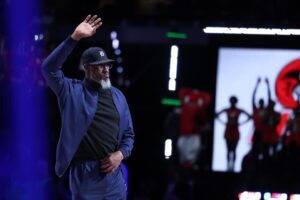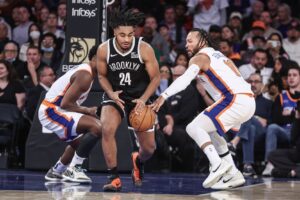The All-Star break has come and gone and now it is time for teams to start being realistic about their postseason ambitions. For the Orlando Magic, the playoffs are no longer a realistic possibility and an off-season rebuild has been set in motion.
The Magic took a big step toward focusing on their future when they traded Serge Ibaka to the Toronto Raptors for Terrence Ross and a 2017 first-round pick. The decision could not have been easy for an organization that had invested so much in a win-now approach.
How the Orlando Magic Make the Best of a Bad Season
The Magic currently sit 14th in the Eastern Conference and hold a dismal 22-38 record. With that said, the season has not been a total waste for the Magic, and there are ways the team can go about making the best of a bad season.
Smaller Lineups
As a result of the Ibaka trade, one thing the Magic will be forced to do going forward is to experiment with smaller lineups. The acquisition of Ross will likely free up some time for Aaron Gordon to play the power forward position. Gordon, who appears more natural at the four spot, has played the majority of this season at the three. Despite averaging a career high 11.2 points per game, Gordon has had his most productive games upon seeing more playing time at the four; that includes a career-high 33-point outing against the Los Angeles Clippers in December. The introduction of smaller lineups for the Magic could allow for more experimenting with the team, as well as helping the team judge which players should be retained in the upcoming off-season.
Increased Playing Time
The remainder of the season could also open up more playing time for the likes of swingman Mario Hezonja, who has had limited opportunities this year. Hezonja is averaging just under 12 minutes per game and has seen a sharp decline in points, field goal percentage, and three-point percentage from last season. With the movement of Gordon to the four and Ross starting at small forward, there should be more opportunities for Hezonja to not only play more minutes off the bench, but possibly try to recapture his form that caused the Magic to select him with the fifth overall pick.
Finding Consistency
Above all else, this season has been a blur of inconsistency for Orlando. Whilst the team has looked impressive on both ends of the floor at times, there have been periods when the Magic aren’t even in the game. The Magic don’t just need to find consistency in the results, either. While changing the starting rotation numerous times, head coach Frank Vogel has also started three different players at point guard this year: Elfrid Payton, C.J. Watson, and D.J. Augustin. The remainder of the season not only presents an opportunity for the Magic to find some sort of continuity with results; it also gives them the chance to find the best lineup combination.
Looking Forward
The last 22 games of the 2016-17 season will say a lot about the direction in which the franchise is going. Despite an underwhelming season thus far, the Magic still have a fairly young roster with plenty of upside. Both Payton and Gordon are recording career-highs in points per game, and their overall effectiveness has improved on the floor. Though the defensive force that was envisioned at the start of the season has not quite worked for general manager Rob Hennigan, this team is by no means a lost cause. For the Magic, the period heading towards the off-season may be an opportunity for the team to re-assess itself and set a benchmark for the future.
Main Photo:
NEW YORK, USA – APRIL 15: Aaron Gordon of the Orlando Magic during an NBA basketball game against the Brooklyn Nets at the Barclays Center in the Brooklyn borough of New York City on April 15, 2015. (Photo by Cem Ozdel/Anadolu Agency/Getty Images)






